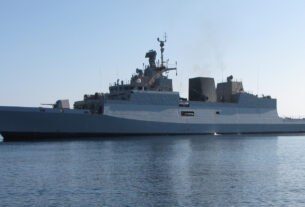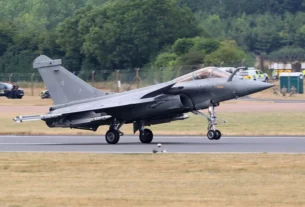Challenges to coastal security
Coastal security is still a major concern for India despite lot of measures being taken post 26/11.
After the Mumbai attacks in 2008, there has been a paradigm shift in the maritime security apparatus that increased emphasis on surveillance, intelligence gathering and information sharing amongst the various stakeholders to ensure an effective response to any emerging situation.
India has a vast coastline of 7,516 km touching 13 states and Union Territories (UTs). It also has around 1,197 islands. The ‘geostrategic position of India’ and the ‘strategic relevance of Indian Ocean’ make it more vulnerable. The physical proximity of India’s coasts to Sri Lanka, Bangladesh, Pakistan and Gulf countries further adds to this. India has been facing cross-border terrorism for decades. However, over the years, with the increased deployment of security forces and surveillance equipment as well as the construction of fences, security along the land borders has been sufficiently tightened. On the other hand, security over the ocean domain with the sea routes remaining poorly guarded.
As part of a coastal security revamp, a number of measures have been adopted with varying degrees of success. This includes a chain of coastal radars, automatic identification systems and the establishment of a National Command and Control Communications Intelligence Network (NC3IN).
India is putting efforts to strengthen security along its vulnerable coastline. A comprehensive Coastal Security Scheme (CSS) to strengthen security infrastructure in coastal states has been implemented.
Under the scheme, coastal states and Union territories have operationalized 183 Coastal Police Stations (CPSs).
Tamil Nadu has set up 32 CPSs, followed by 22 in Gujarat, 21 in Andhra Pradesh, 19 in Maharashtra and 18 in Odisha, with the number touching 183 police stations across all coastal states and Union territories.
To improve patrolling along the coast, 204 boats and vessels have been deployed across all coastal regions, along with 280 four-wheelers and 546 two-wheelers.
Joint operations centres set up by the Indian Navy as command and control hubs for coastal security at Mumbai, Visakhapatnam, Kochi and Port Blair have also become fully operational. Paramilitary forces and the Indian Army have also been manning open riverine spaces in north India to thwart infiltration attempts.
Role of ICG
While the Indian Navy is overall entrusted with maritime security, including coastal and offshore, the Indian Coast Guard is responsible for coastal security in territorial waters, including areas patrolled by coastal police comprising state marine police
A three-tier security arrangement was put in place, with the Indian Navy, the Coast Guard (CG) and the marine police jointly tasked with safeguarding India’s maritime zones. As the lead agency, the Indian Navy took on the task of protecting the outer-most tier. The Coast Guard would sanitise the intermediate layer extending up to the 12 nautical mile limit of the territorial waters, even as the marine police was entrusted with the security of the inner-most tier, comprising the shallow coast and inland waters.
Coastal patrolling by Navy, Coast Guard and marine police has increased sharply over the last few years. At any given time, the entire west coast is under continuous surveillance by ships and aircraft of Navy and Coast Guard.
Inter–agency coordination, between nearly 15 national and state agencies has improved dramatically, only due to regular “exercises” conducted by the Navy in all the coastal states.
In addition to continuous patrolling by Navy and Coast Guard, modern technical measures have also been implemented for coastal surveillance, by way of a chain of Automatic Identification System (AIS) receivers, for gapless cover along the entire coast. This is complemented by a chain of overlapping coastal radars in the coastal areas of mainland and Islands. A second phase of coastal radars is also being implemented to plug the small gaps in some places.
Recently even a decision has been taken to establish a dedicated agency to deal with India’s near-seas threats. The proposal for a Coastal Border Police Force (CBPF) has been endorsed by the current government. However, as a paramilitary force, the CBPF will not have the authority and mandate of the state police. While the new agency might have the powers to arrest and detain suspects, it will not be able to register offences or carry out investigation.
Reportedly, the new agency will have nominated police personnel facilitating intelligence and information collection, but in the absence of institutionalised accountability of the state police towards coastal security, the arrangement is unlikely to be very effective.
The Indian Coast Guard protects India’s maritime interests and enforces maritime law, with jurisdiction over the territorial waters of India, including its contiguous zone and exclusive economic zone. The ICG has a larger mandate and territory to cover.
To bolster coastal security mechanism, two new interceptor boats C435, C436 were inducted into the Indian Coast Guard, Eastern region recently.
The two boats underwent extensive trials on equipment and machinery and were part of a fleet of 36 interceptor boats that were manufactured by Larsen and Toubro Shipyard Ltd.
The inducted boats will be based at Karaikal and Krishnapatnam in the Eastern region (respectively) and the presence of the boats would further strengthen the coastal security mechanism.
C-435 and C-436 boats would be utilised for coastal patrol exercise, search and rescue, anti-terrorist, anti-smuggling operations and fisheries protection.
Equipped with state-of-the-art sensors including navigational and communication system, the boats were capable of operating in tropical conditions and can travel at a speed of 40 knots.
Both the boats would be manned by 12 crews, including one officer and two sub-ordinate officers.
Vulnerabilities
Post 26/11, the Navy is not taking any input, related to coastal security, lightly.
However, still the Indian Navy feels small boats are one of the main concerns for coastal security as they are difficult to track. Small boats are a major loophole in coastal security.
Many small boats have not installed tracking system, making it difficult to be tracked by the security forces.
The case of abandoned merchant vessel MT Pavit, breaking the multi-layered coastal security, which ran aground on the shore of Mumbai, shows the loopholes in the coastal security.
The trend of infiltration through the sea route has been observed in recent years with the construction of fencing along the India-Pakistan and India-Bangladesh borders. As far as infiltration by the sea route is concerned, the creek areas of Gujarat have been highly vulnerable. Geographical proximity to Pakistan and a terrain that is conducive for stealth movements make the region ideal for infiltration.
Indian coasts witness a wide range of maritime activities such as internal and international trade and travel, offshore oil exploration, fishing, hydrographic survey, patrolling, etc. All these activities result in the movement of a range of marine vessels such as cargo ships and passenger launches, containers, oil tankers, dhows, barges, fishing trawlers and boats, patrol vessels, warships etc.
Monitoring these vessels and regulating their movement offer quite a challenge for the security forces as well as the law enforcement agencies.
A major concern centres around the lack of documentation and identity checks on fishing trawlers. Though the Indian Home Ministry is now focussing on issues like issuance and distribution of biometric identity cards and card readers to fisherfolk, colour coding of boats, monitoring of fish landing points and crossing of International Maritime Boundary Line by fishermen.
India faces many threats and challenges from its maritime domain. While threats – such as maritime terrorism – have the enormous ability to destroy national security, challenges like smuggling, piracy and the straying of fishermen can also jeopardise the safety of the nation. Thus, securing the country’s coasts and its adjacent seas from these threats and challenges requires a comprehensive strategy.




